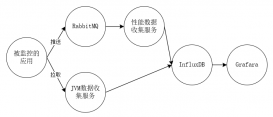本文基于jdk1.8进行分析。
linkedlist和arraylist都是常用的java集合。arraylist是数组,linkedlist是链表,是双向链表。它的节点的数据结构如下。
|
1
2
3
4
5
6
7
8
9
10
|
private static class node<e> { e item; node<e> next; node<e> prev; node(node<e> prev, e element, node<e> next) { this.item = element; this.next = next; this.prev = prev; }} |
成员变量如下。它有头节点和尾节点2个指针。
|
1
2
3
4
5
6
7
8
9
10
11
12
13
|
transient int size = 0;/** * pointer to first node. * invariant: (first == null && last == null) || * (first.prev == null && first.item != null) **/transient node<e> first;/** * pointer to last node. * invariant: (first == null && last == null) || * (last.next == null && last.item != null) **/transient node<e> last; |
下面看一下主要方法。首先是get方法。如下图。链表的get方法效率很低,这一点需要注意,也就是说,我们可以用for循环get(i)的方式去遍历arraylist,但千万不要这样去遍历linkedlist。因为linkedlist进行get时,需要把从头结点或尾节点一个一个的找到第i个元素,效率很低。遍历linkedlist时应该使用foreach方式。
|
1
2
3
4
5
6
7
8
9
10
11
12
13
14
15
16
17
18
19
20
21
22
23
24
25
26
27
|
/** * returns the element at the specified position in this list. * @param index index of the element to return * @return the element at the specified position in this list * @throws indexoutofboundsexception {@inheritdoc} **/public e get(int index) { checkelementindex(index); return node(index).item;}/** * returns the (non-null) node at the specified element index. **/node<e> node(int index) { // assert iselementindex(index); if (index < (size >> 1)) { node<e> x = first; for (int i = 0; i < index; i++) x = x.next; return x; } else { node<e> x = last; for (int i = size - 1; i > index; i--) x = x.prev; return x; }} |
下面是add方法,add方法把待添加的元素添加到链表末尾即可。
|
1
2
3
4
5
6
7
8
9
10
11
12
13
14
15
16
17
18
19
20
21
22
23
24
|
/** * appends the specified element to the end of this list. * <p>this method is equivalent to {@link #addlast}. * @param e element to be appended to this list * @return {@code true} (as specified by {@link collection#add}) **/public boolean add(e e) { linklast(e); return true;}/** * links e as last element. **/void linklast(e e) { final node<e> l = last; final node<e> newnode = new node<>(l, e, null); last = newnode; if (l == null) first = newnode; else l.next = newnode; size++; modcount++;} |
this is the end。
总结
以上就是这篇文章的全部内容了,希望本文的内容对大家的学习或者工作具有一定的参考学习价值,谢谢大家对服务器之家的支持。如果你想了解更多相关内容请查看下面相关链接
原文链接:https://blog.csdn.net/li_canhui/article/details/85004699

















